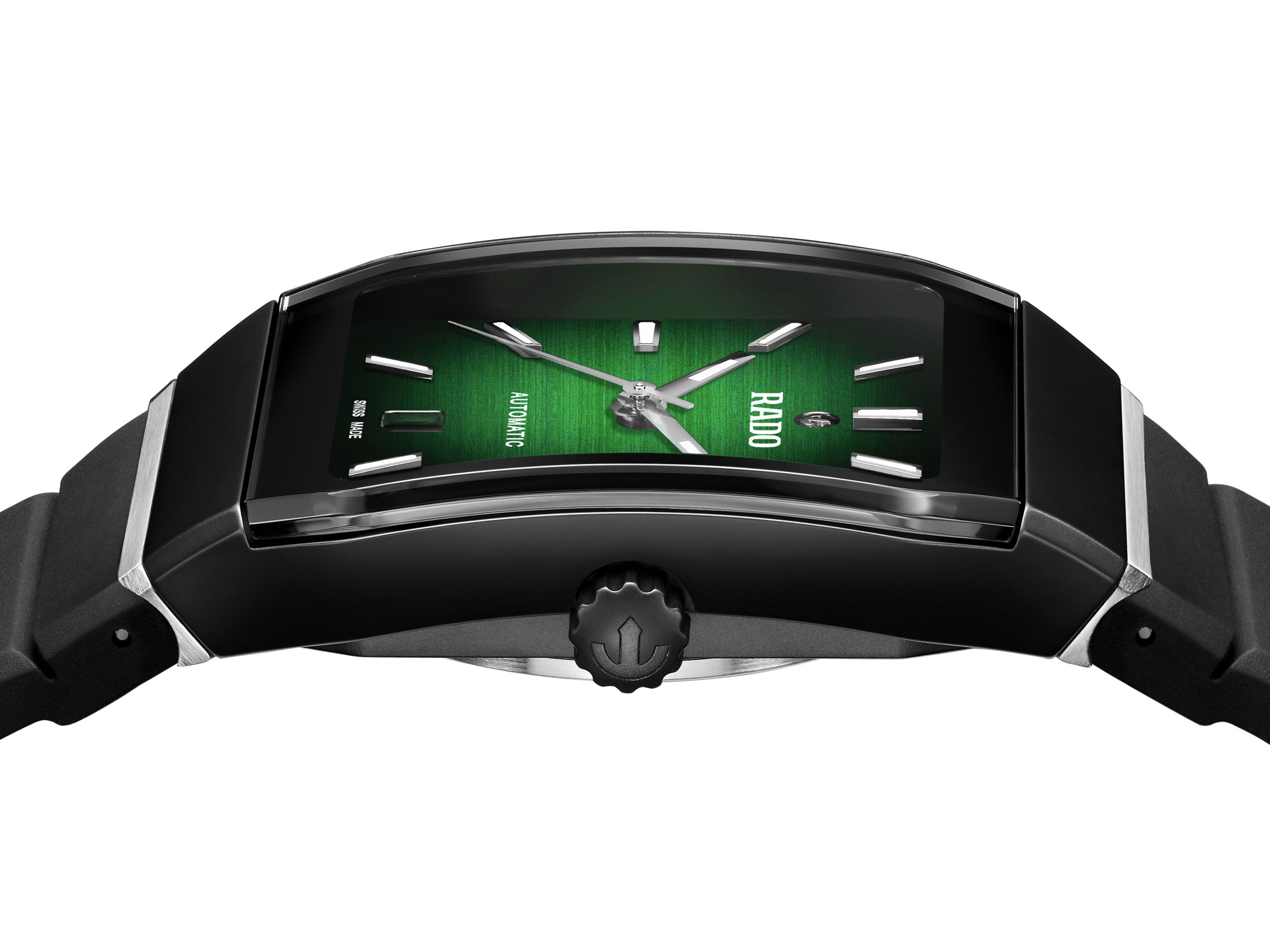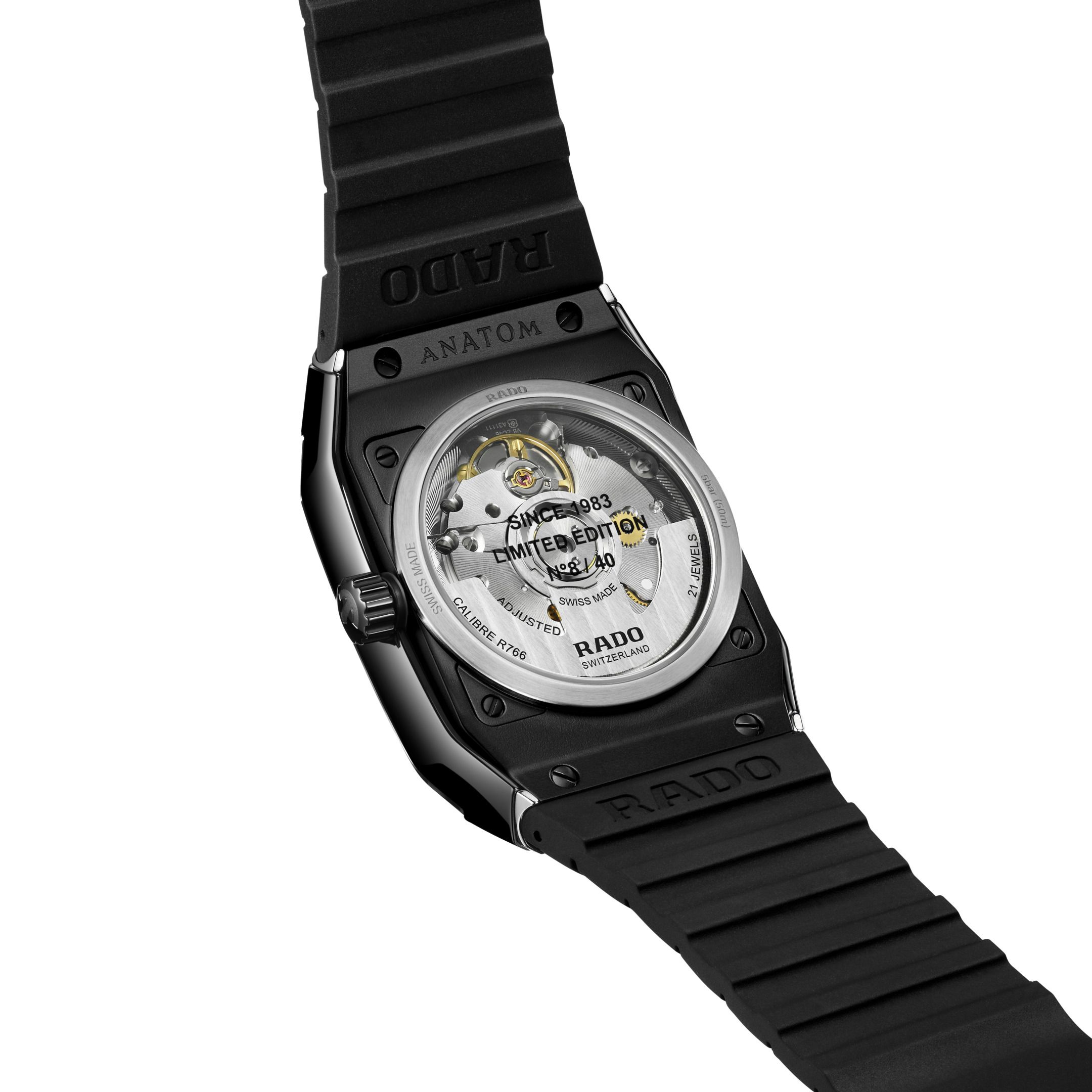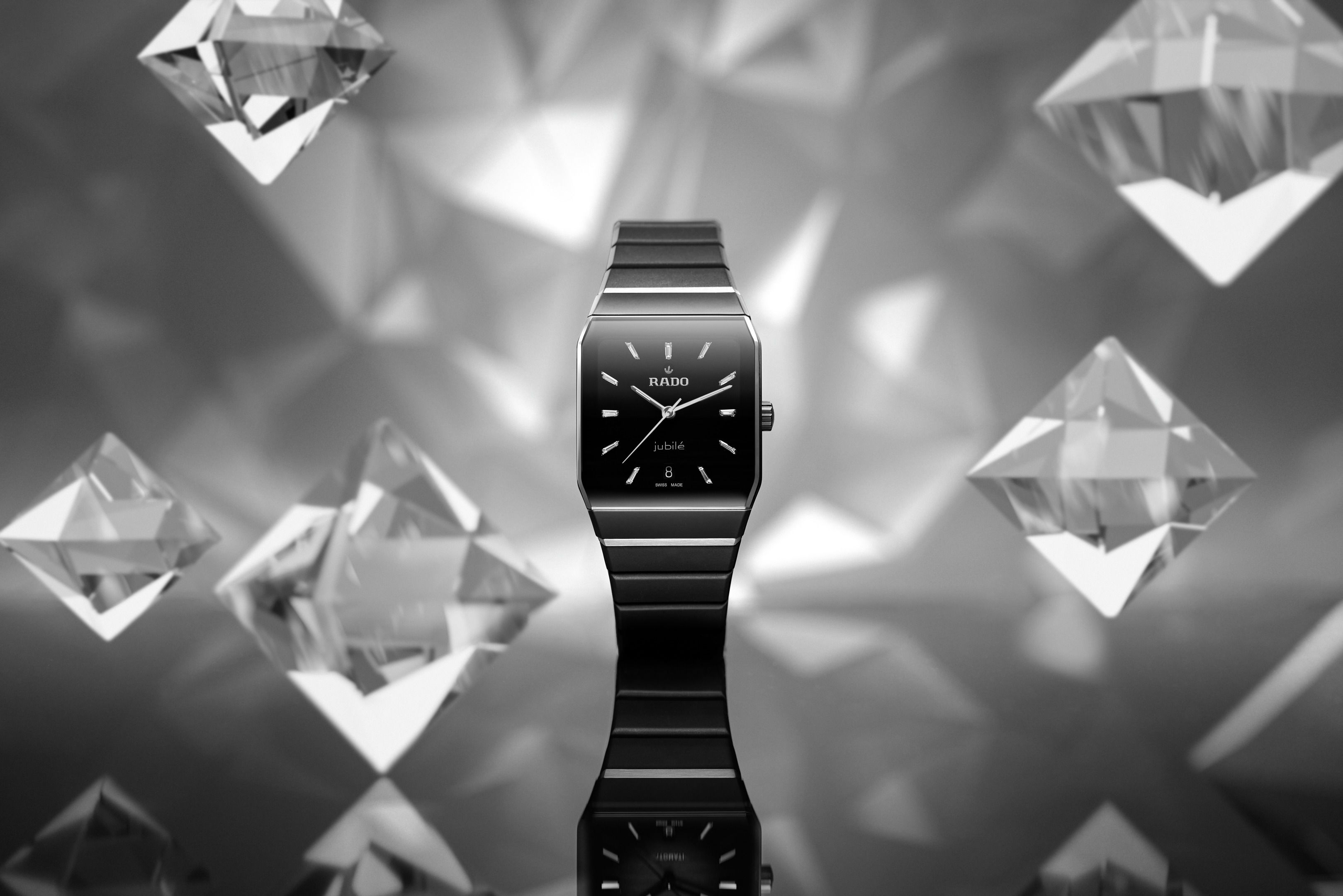Rado Brings Back The Anatom, But Does This Blast From the Past Still Have Relevance Today?
As someone who vividly remembers the 1980s and has a soft spot for the fun, bold, and experimental designs of that decade, I was excited to learn that Rado is bringing back one of its iconic watches from that era - the Anatom.

Unveiled in 1983, the original Anatom made a splash with its unique curved rectangular case and convex sapphire crystal. It encapsulated the futuristic and space-age aesthetic that defined so much of '80s style. With its sleek geometric case flowing seamlessly into a sculptural bracelet, the watch was quintessentially Rado, showcasing the brand's mastery of innovative materials and standout shapes.

Fast forward 40 years, and Rado has reintroduced a modern take on the Anatom for 2023. At first glance, it ticks all the boxes: a nostalgic callback to the past, executed through Rado's contemporary design language. The dimensions have been beefed up for today's tastes, with the case size increased from 28mm to 32.5mm. And in keeping with Rado's leadership in ceramic watches, the new Anatom has a black ceramic bezel and is available with a rubber strap in three dial colors - blue, cognac, and green.

So does this blast from the past still have relevance today? As both a watch enthusiast and a child of the '90s, I have mixed feelings.
On the one hand, the new Anatom is a faithful homage, maintaining the retro-futuristic vibe of the original with some modern tweaks. The convex sapphire crystal and seamless case-to-strap integration are still there, creating that space-age feel. The color schemes and horizontally brushed dial also nod to the '80s DNA of the watch. But at the same time, it feels more like a retro-inspired lifestyle accessory than a true vintage reissue.

Unlike brands like Tudor and Longines which have leaned heavily into recreating vintage models to tap into the prevailing nostalgia trend, Rado's homage feels more subtle. Perhaps this is intentional - a way to loosely evoke the past without simply copying it. But for me, it dilutes the essence of what made the original Anatom special.
That's not to say the new model is not an appealing watch in its own right. The elegant dimensions, ceramic case, and colorful dials give it a contemporary edge. But it lacks the quirkiness, experimental exuberance, and idiosyncratic style that defined so much of '80s design. Brands like Swatch and Rado itself were pushing boundaries back then, not just playing to nostalgia.

Nevertheless, credit to Rado for not simply rehashing the steel Anatom of old, but attempting to translate its appeal for today. The limited edition Jubileé model, with its lacquered dial, baguette diamonds, and rhodium anchor motif adds a touch of modern luxury.

Diving deeper into the technical details of the new Anatom reveals Rado's meticulous approach to re-engineering this icon. The original 1980s model was powered by a quartz movement, but the new edition features Rado's own automatic Calibre R766. This modern movement beating away inside the retro case provides 72 hours of power reserve and includes a date aperture at 6 o'clock, enhancing the watch's functionality. The convex sapphire crystal is an impressive feat of engineering given the curved shape of the case. The bezel, case back, and other components are thoughtfully constructed from materials like ceramic, steel, and PVD coating to balance durability, aesthetics, and wearability. Attention has also been paid to subtle design cues - the anchor placed discreetly at 12 o'clock and the horizontally brushed finish of the dial add interest and depth.

For hardcore Rado fans and those with fond memories of '80s fashion, the new Anatom will doubtless have great appeal. It's a slick, well-made, and wearable homage to the past. But to truly recapture the creative spirit and bold vision of the original, I hope Rado will take more creative risks moving forward, rather than solely mining its archives. The '80s were a time of fearless experimentation and boundary-pushing design. It will take more than ceramic bezels and curved cases to channel that era's essence again.
No articles found





